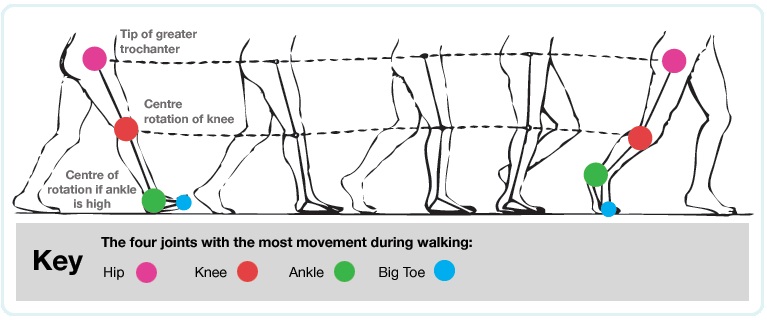The Gait Cycle
The mechanics of walking involves a coordinated effort of the feet, knees, and hips. The cycle of how a person walks is called the gait.
The gait cycle is divided into two phases: the time a foot is on the ground is called the “stance” and makes up 60% of the cycle. The motion of the foot off of the ground is called the swing.
During the stance phase, there are four motions that involve the foot.
- heel strikes the ground
- entire foot comes in contact with the ground
- heel lifts placing weight on the ball of the foot
- big toe provides the propulsion for the lift and swing
The swing phase has two characteristics — acceleration into the swing and deceleration into placement of the heel for the next step.
Evaluation
All phases of the gait cycle can be evaluated by a physical therapist or podiatrist to determine if there are problems with the musculoskeletal or neurological systems. Some gait issues are caused by injury, such as a stroke, or by a disease. People with gait problems need plenty of time for walking because their balance is challenged and may benefit from assistive devices like canes and walkers to prevent falls.
Posted: 01/28/19; Revised: 06/21/21.
As a service to our readers, American Bone Health provides access to our library of archived content. Please note the date of the last review on all articles. No content on this site, regardless of date, should ever be used as a substitute for direct medical advice from your doctor or other qualified clinician.

